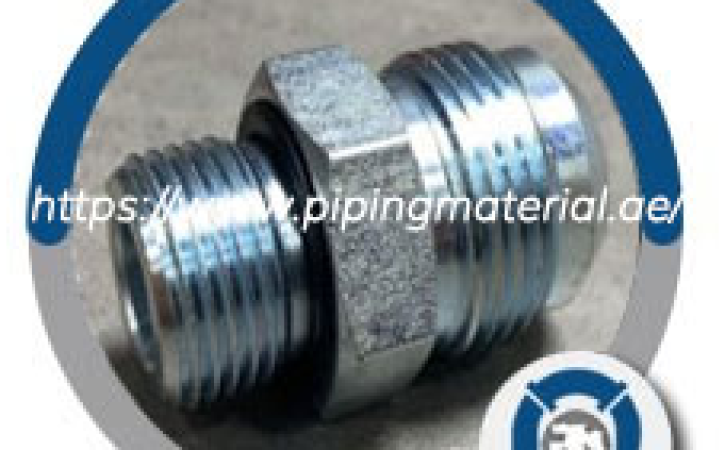
Flare fittings
Flare fittings are an essential component in plumbing, air conditioning, and refrigeration systems. They are designed to connect pipes and tubes and provide a secure and leak-free seal. Flare fittings are known for their durability, reliability, and ability to withstand high pressure, making them a popular choice in various applications. In this article, we will explore the basics of flare fittings, including what they are used for, what they are called, the differences between NPT and flare fittings, how they are sized, and the differences between brass tube fittings and flare fittings. Understanding the different aspects of flare fittings can help you make informed decisions for your next project.
A flare fitting is a type of mechanical joint used in plumbing, air conditioning, and refrigeration systems to connect pipes and tubes. They are designed to create a secure and leak-free connection by compressing a flared end of tubing onto a fitting, creating a mechanical seal.
What is a Flare Fitting Called?
Flare fittings are also known as flare joints, flare connections, or flare unions. The name refers to the flared end of the tubing that is used to create the seal.
What is the Difference between NPT and Flare?
NPT (National Pipe Thread) and Flare are two different types of threading and sealing technologies used in plumbing and HVAC systems. While both are used to connect pipes and fittings, they have different applications and advantages.
NPT NPT is a standard thread form used in North America for screw threads in pipes and fittings. It is a tapered thread that creates a tight seal by wedging the male and female threads together as they are tightened. NPT fittings are commonly used in low-pressure applications, such as water and gas lines. The taper of the NPT threads allows for a tight, leak-free seal and also compensates for slight variations in the pipe and fitting sizes.
Flare fittings use a flared end on a piece of tubing to create a mechanical seal. The flared end of the tubing is inserted into the fitting and then secured with a nut. The flare creates a metal-to-metal seal, providing a reliable and secure connection that is resistant to leaks. Flare fittings are typically used in high-pressure applications, such as air conditioning and refrigeration systems, and are available in a variety of sizes to accommodate different tubing sizes.
How are Flare Fittings Sized?
Flare fittings are sized based on the diameter of the tubing that they will be connecting. The size is usually indicated by the outside diameter (OD) of the tubing in inches. This means that the fitting should match the OD of the tubing to ensure a proper fit.
To determine the size of the flare fitting, measure the OD of the tubing with a caliper or a micrometer. It is important to be precise and accurate when measuring the tubing to ensure the proper size of the fitting.
Once the tubing size has been determined, the next step is to select a flare fitting that is the same size as the tubing. Flare fittings are available in a variety of sizes, ranging from 1/8-inch to 2 inches, to accommodate a wide range of tubing sizes.
It is crucial to choose the correct size of a flare fitting to ensure a secure and leak-free connection. Using a fitting that is too small will result in a weak connection that may leak while using a fitting that is too large will result in a loose connection that may also leak.
In summary, sizing flare fittings involves measuring the OD of the tubing and selecting a fitting that is the same size as the tubing. It is important to be precise and accurate when measuring the tubing and choosing the fitting to ensure a secure and leak-free connection.
Brass Tube Fittings vs Flare Fitting
Brass tube fittings and flare fittings are both commonly used in plumbing systems, but they have different applications and advantages.
Brass Tube Fittings Brass tube fittings are typically used in low-pressure applications, such as water and gas lines, due to their relatively low cost and ease of installation. They are made from a solid brass bar that is machined into the desired shape and then threaded to connect to other fittings. Brass tube fittings provide a reliable seal and are resistant to corrosion, making them a popular choice for many applications.
Flare Fittings Flare fittings, on the other hand, are designed for high-pressure applications, such as air conditioning and refrigeration systems. They use a flared end of the tubing to create a mechanical seal, providing a more reliable and secure connection than brass tube fittings. Flare fittings are typically made from brass or steel and are available in a variety of sizes to accommodate different tubing sizes. They are more expensive than brass tube fittings, but they provide a more reliable connection and are often used in applications where leaks are unacceptable.
The choice between brass tube fittings and flare fittings depends on the specific requirements of a project, including pressure, reliability, and cost.There are many brass tube fitting suppliers, both online and in local areas.Check the reputation of the supplier and the support offered.
When looking for inverted flare fitting suppliers, it is important to consider factors such as product quality, availability, and price. Some suppliers may offer better prices, but lower quality products, while others may have a larger selection of products but at a higher cost. It is also important to consider the reputation of the supplier, as well as the level of customer service and support offered.
In conclusion, flare fittings are an important component in plumbing, air conditioning, and refrigeration systems. They are designed to create a secure and leak-free connection between pipes and tubes. Understanding the differences between NPT and flare fittings, and between brass tube fittings and flare fittings, can help you make informed decisions for your next project.










